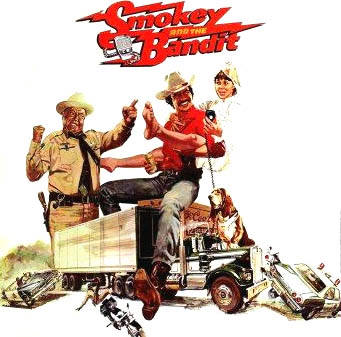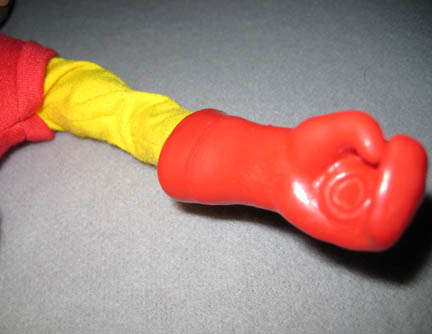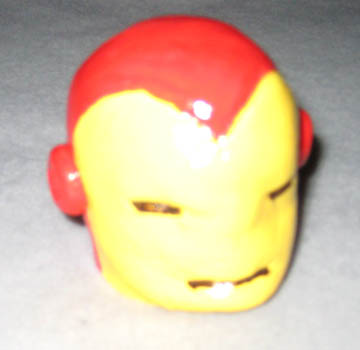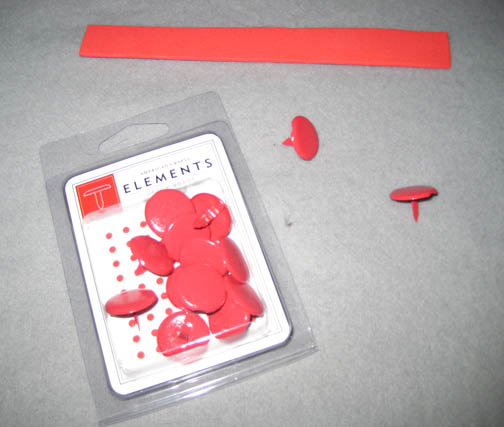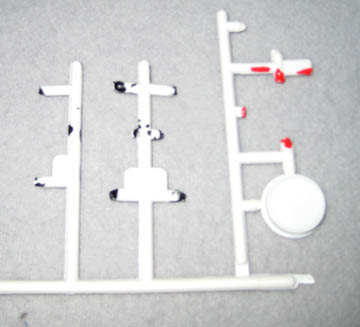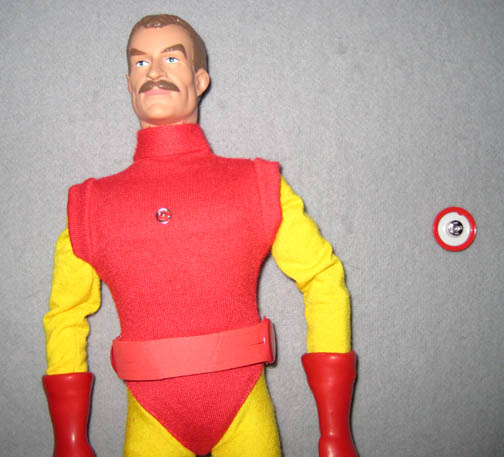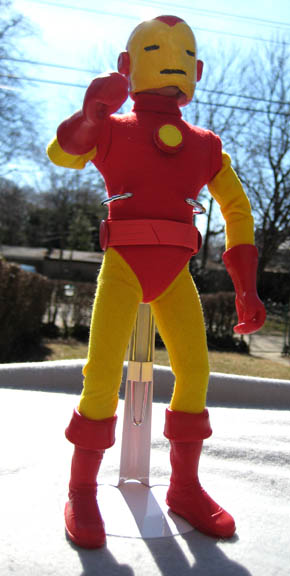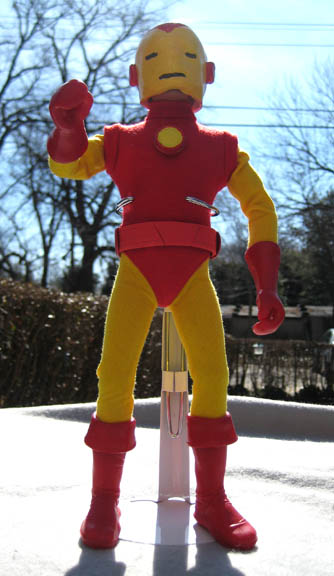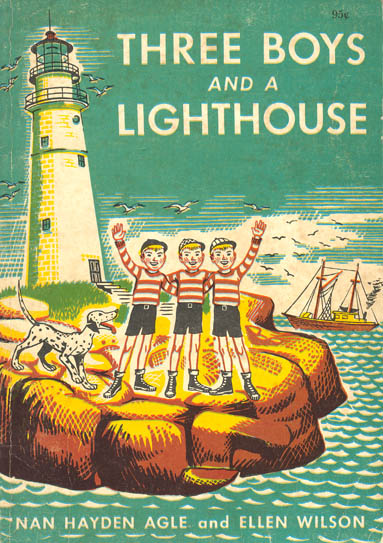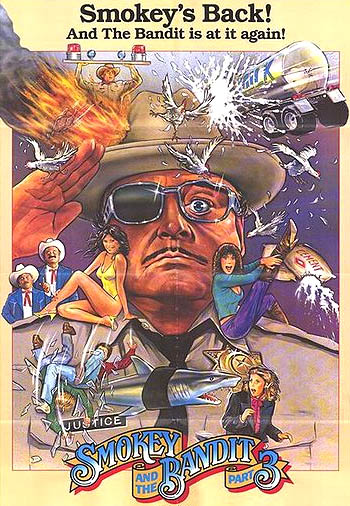 In the previous two posts, I talked about my adolescent experiences seeing both Smokey and the Bandit and Smokey and the Bandit II. For me, these movies fall into that strange category of films where they are so bad, they are good. However, I still thought they could have been better than they were. Not so much the first one, but the sequel definitely could have easily been improved with a more sensible plot and a faster tempo. I really didn't think the studio would risk a third installment after the embarrassment of the second, but the studio and Jackie Gleason were not ready to let go of the franchise just yet.
In the previous two posts, I talked about my adolescent experiences seeing both Smokey and the Bandit and Smokey and the Bandit II. For me, these movies fall into that strange category of films where they are so bad, they are good. However, I still thought they could have been better than they were. Not so much the first one, but the sequel definitely could have easily been improved with a more sensible plot and a faster tempo. I really didn't think the studio would risk a third installment after the embarrassment of the second, but the studio and Jackie Gleason were not ready to let go of the franchise just yet.After seeing the horrible Cannonball Run in the summer of '81, I swore I would never see another one of these movies ever again. My resolve was only strengthened when I read that the third installment of the Smokey saga would feature Jackie Gleason in both roles and be called Smokey IS the Bandit. I couldn't get my mind around how this would work. Was Buford going to get knocked on the head and suddenly think he was the Bandit? If so, who would be chasing him as the sheriff? My mind boggled, but I still had no thought of seeing it, at least not in the theatre. Later, in the spring of '83, I read that the test audiences hated the dual-role idea and the studio was hastily shooting new footage to remake the movie in time for a summer release. It finally came out as Smokey and the Bandit Part 3 in late summer (why it was "Part 3" and not "III" is unclear). The bad-movie lover in me was tempted to see how they cobbled this mess together, but the only theatre showing it in my area was a dirty little dump that actually became a porn theatre later that same year. I took a pass.
The following summer, Smokey and the Bandit Part 3 popped up on cable, so I watched it. I was surprised that I didn't dislike it as much as I thought I would. At least they did remember to fill the movie with lots of high speed car stunts, and they kept the story hopping at a rapid clip (at only 85 minutes running time, they had no choice). In the revised version, a retired Buford T. Justice (Jackie Gleason) decides to take a challenge from Big Enos and Little Enos Burdette (Pat McCormick and Paul Williams) because he is bored. To hedge their bet, they enlist Cledus Snow (Jerry Reed) to pretend to be the Bandit and generally get in Buford's way. The Enos boys also create diversions of their own, including trying to blow Buford and his son to bits with explosives. Why these two would want to become murderers to protect their bet is not explained.
While watching the hijinks, I'm always distracted by the thought of how the movie looked in its original form. During the car stunts involving the Trans Am, you can see that the person in the driver's seat is made up to look like a fat, older version of the Bandit, in keeping with the original premise of Jackie Gleason playing both parts. The fact that Jerry Reed has to wear a bad fake moustache to look vaguely like the Bandit is also disconcerting. Although the movie has a disconnected feel no doubt created by the large amount of reshooting, the old and new footage meshes better than you would expect and you sometimes believe that Gleason and Reed may have actually been on the same set at the same time. Nevertheless, this movie is cringe-worthy in countless ways.
Burt Reynolds makes a cameo at the end which is utterly nonsensical, but I think the producers wanted to somehow make up for the Burt-lessness of the previous 80 or so minutes of the movie. It doesn't help. Just when you are feeling completely depressed for watching this travesty, the ending credits roll with a song from former Kingston Trio head John Stewart titled, "Ticket for the Wind." Although it's a great song, the downbeat quality is completely inappropriate for a farcical comedy. Think "Tom Dooley" with an 80s electronic beat. You can listen to it here.
I remember getting to this part of the movie and just feeling so sorry for the entire cast. They actually tried to be entertaining, but ended up embarrassing themselves. Around this time, Gleason seemed to be embarrassing himself on a regular basis with such films as The Toy and The Sting II. Somehow, his reputation remained unsullied, though. I guess people loved The Honeymooners so much, they could forgive him.
I can't leave this final segment on the Smokey and the Bandit saga without mentioning the dubbing. While in the first two installments they used character actor Henry Corden to overdub Gleason's voice in certain scenes, for the third installment, they couldn't even get his services. In Part 3, some scenes feature overdubs by someone who doesn't sound even remotely like Gleason. It's kinda like the sound engineer just went into the studio and took a crack at it. Although unintentional, it's the funniest thing in the movie.





